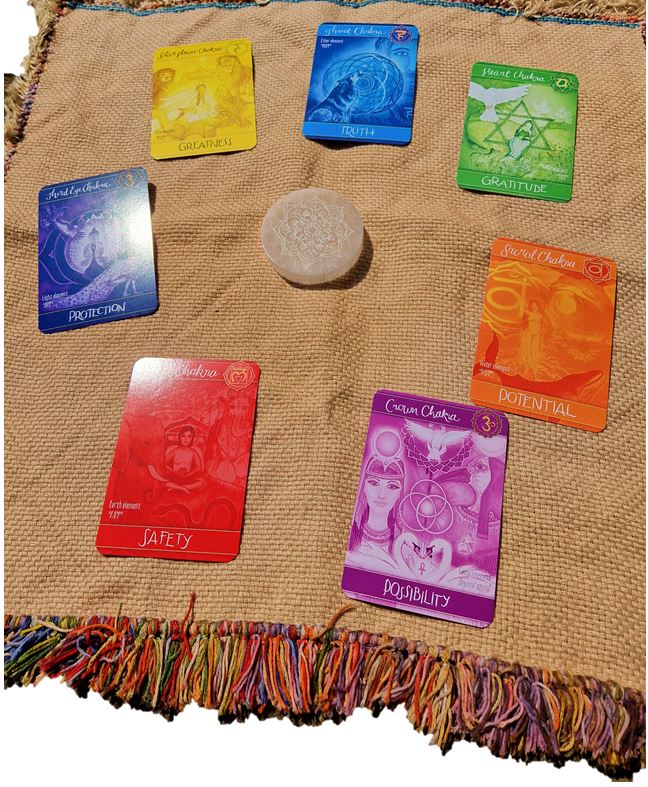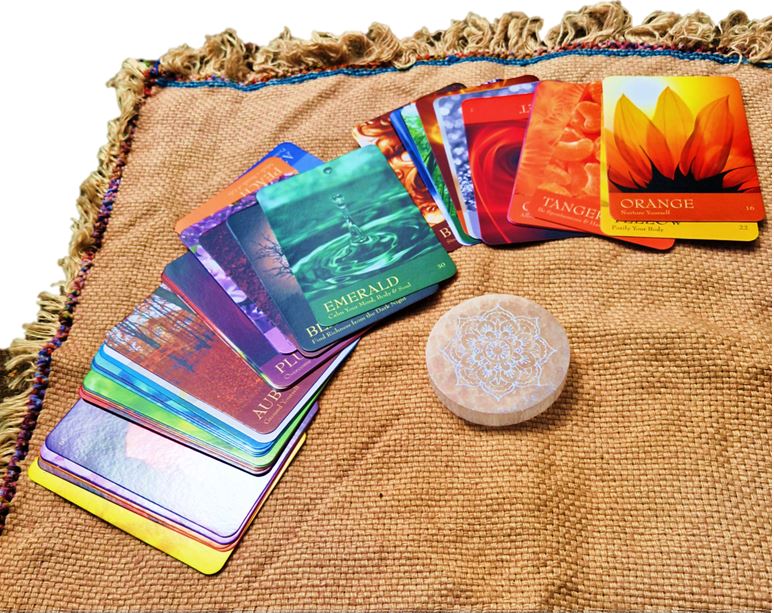Colour Healing
How do we use colour in healing?
First let’s describe what colour is
Colour, like all things, is a vibration of energy. In science this vibration is known as electromagnetic frequency. Some of the vibrations on the electromagnetic spectrum are invisible to humans like infra-red, ultraviolet, and x-rays. The middle part though is visible to humans and this is where we have coloured light.
Variation in the speed of vibration gives us different colours; slower vibrations give us warm colours red, orange, yellow. Faster vibrations give us cooler colours violet, indigo and blue. Green is medium frequency on the visible light spectrum and is in the mid-range.
Colour for healing
In Colour therapy we do the healing work first by tuning into the energy that is part of dis-ease, stress, pain etc. Then a colour is introduced to change or modify that energy (or vibration) of illness, to bring balance, and to support the energy systems of the body; this provides the opportunity for the body and light bodies (aura) to heal.
We respond to light
Our skin and energy field can absorb and respond to light; one example is getting a tan – the skin responds to sun light frequencies (or ultra-violet lamps) and produces protective pigment, it also makes vitamin D and triggers the release of serotonin.
The human body, in fact every cell, actually emits small amounts of light energy. This may be from biochemical reactions that are constantly taking place. Some people can see or sense the light or colour changes in different places in and around the body.
What to expect at your colour healing appointment
Your first appointment is longer so we can carry out a consultation to ascertain what you need and what you’d like to gain or achieve with colour healing. This might be related to physical symptoms, emotional stress, energetic blocks, or if you feel at a crossroads in life.
There are many methods of applying colour during your healing session and I will be able to help you continue the colour healing afterwards, between appointments.
Colour Healing Spine Vertebral treatments
The spine is energetically assessed and any vertebrae identified that need or would benefit from a certain colour frequency. Once the colour frequency needed is identified the vertebrae are individually treated.
The assessment is done fully clothed and then just the relevant vertebrae are treated with coloured light directly on skin.
Personally I find this treatment to be very helpful if my back feels like it’s ‘slightly out’ or if certain muscles feel like they’re taut.
Colour Healing for the body
Once it’s established that an area might benefit from a colour treatment the correct colour is ascertained and the area is then ‘given’ colour and reassessed. For example an inflamed condition might benefit from a ‘cool colour’.
The exposure to colour both for healing for the body and vertebral treatments is usually in quite short segments. This means its non-invasive, and as there are no physical manipulations is safe and suitable for most people.
Safety
The consultation process and energy checks are carried out to flag up any contraindications for using certain wavelengths of colour in therapy.
Chakras and Meridians
Colour and coloured light can also be introduced therapeutically to chakras and meridian points and these influence and modify energy to release energy blocks, stimulate or sedate energy.
About Colour
We are all influenced by colour on a daily basis both consciously, for example what we choose to wear, or how we decorate or accessorise our home; and subconsciously, perhaps when we make a choice about what brands we buy or places we prefer to visit.
Some responses to colour are learned within our society while other responses are autonomic; responses which bypass personal and learned preferences.
An example, traditionally wedding dresses in the West have been white or cream, while in other parts of the world its traditional to wear red. For funerals the Chinese have traditionally worn white, while in the West it’s black.
How we respond to colour
When we see colour, impulses travel down the optic nerve and is processed in the brain where we recognise colour, shape and objects and form a response to them.
We also respond to colour without the need for sight via the skin and energy field. People who are colour-blind or have no sight at all still have a response to colour. Plants grow better in certain wavelengths of coloured light which is now being used in commercial plant production.







